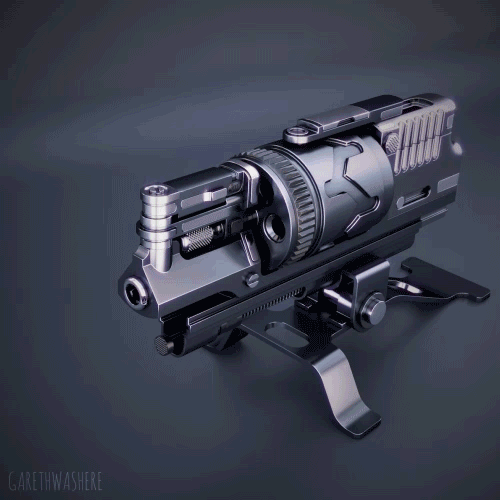

Clarke's patent came as reciprocating-action automatic weapons like the Maxim gun and the Browning gun were peaking in popularity. Clarke patented the first fully automatic, gas-operated rotary chamber gun, but his design was ignored at the time.

The Hotchkiss revolving cannon of the late 19th century was not a revolver cannon in the modern sense, more similar to a Gatling gun. The gun was captured in Danville, VA by Union forces on April 27, 1865. The Confederate States of America used a single 2-inch, 5-shot revolver cannon with manually rotated chambers during the Siege of Petersburg.

The design idea was impractical, far ahead of what 18th century technology could achieve.ĭuring the 19th century, Elisha Collier and later Samuel Colt used the revolver action to revolutionize handguns.

Breech parts are guided by specific grooves that accelerates them through the leverage and slows them down when necessary thus reducing the impulses from recoil (i.e.MLG 27 remote controlled revolver cannon on board an Elbe class tender of the German NavyĪn early precursor was the Puckle gun of 1718, a large flintlock revolver gun, manually operated. GSh-30-2 uses some cogwheel system to link the breeches and classic gas system for each barrel.īoth have fixed barrels. According to the book by man (from former Czechoslovakia) that was involved in design of the automatic weapons and was teaching the subject at university, 23mm version has breeches connected by lever and sort of the crossed gas system - gases from firing barrel accelerates its own breech rearward but they are channeled behind opposing piston and accelerate it forward - and vice versa. GSh-23 and GSh-30-2 both use boxing system. Just to explain - that flash hinder was mounted either on LMG or some AR that was equipped with the night vision I read about design that was compatible with even very old night-vision (very sensitive to strong outer light sources) sets as it caused sort of "stall" effect. But they seem to be below the coverįlash hinders at muzzles can also help if they are of the right design. If you take frames in between shots, you do not record muzzle flash at its peak, while gases flow from the breach might be more constant due to accumulation through the coverĪlso those might not be just gases from the breech but also from the gas system - depends where are venting points. flash seen on camera can be also attributed to the synchronization of the framerate of the camera to the firing cycles.


 0 kommentar(er)
0 kommentar(er)
